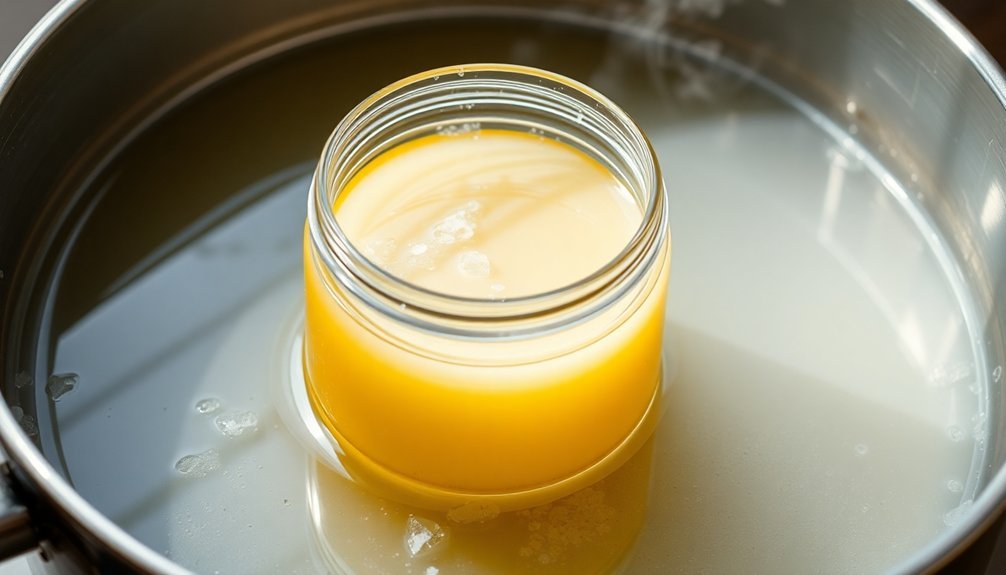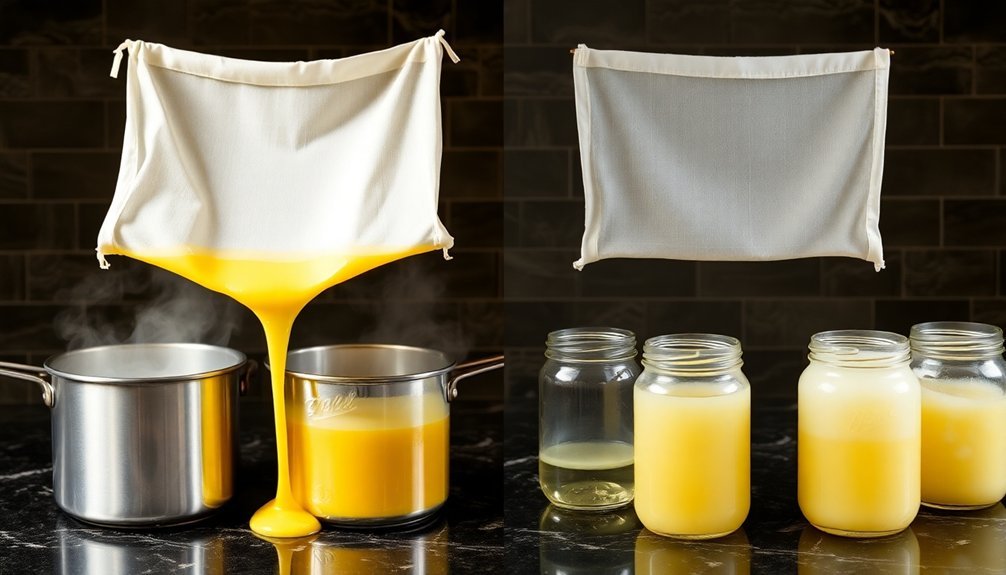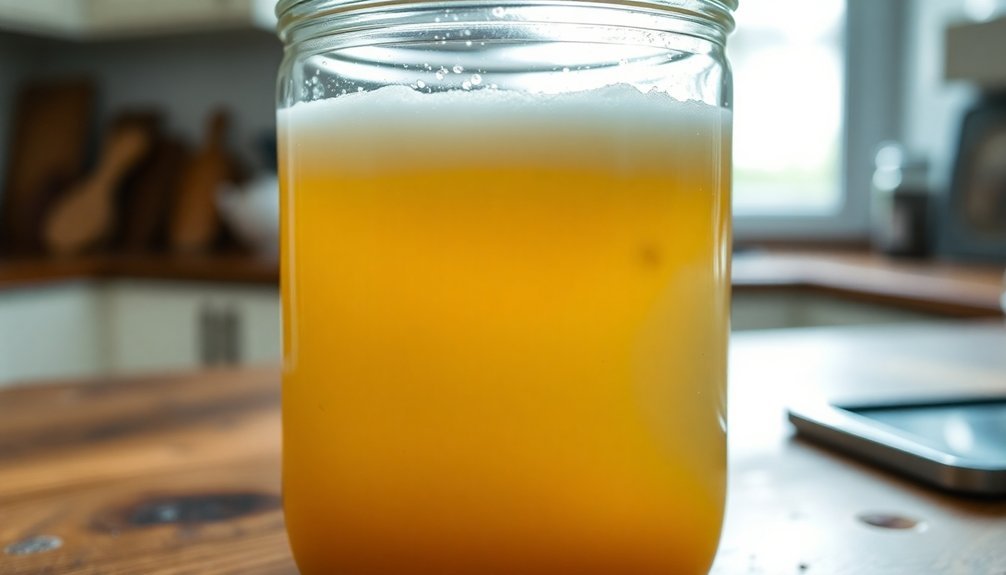You'll find three proven methods to purify fat for soap making: the traditional salt water method, double-render clarification, and vinegar-based cleansing. Salt water helps coagulate impurities while letting clean tallow rise to the top. Double-rendering builds on this by repeating the process multiple times for enhanced purity. The vinegar technique effectively eliminates stubborn odors and particles. Each method offers unique benefits, and understanding their nuances will transform your soap-making journey.
Traditional Salt Water Purification Method

When it comes to purifying fat for soap making, the traditional salt water method remains one of the most reliable techniques you'll find.
To use this purification method, you'll need to melt your rendered fat and combine it with salt water, which helps coagulate impurities during the cooling process.
As the mixture cools, you'll notice the impurities settling at the bottom of your container while the clean tallow rises to the top.
Remember to add salt only after rendering, not during, as this can make the purification process more difficult.
Once the fat has completely solidified, you can easily separate the pure tallow from the sediment-filled salt water below.
This method not only cleans your fat effectively but also improves its quality for soap making by reducing unwanted odors.
Double-Render Clarification Process

Building upon the traditional salt water method, the double-render clarification process offers an extra level of fat purification for soap makers seeking premium-quality tallow.
To begin the double-render clarification process, you'll need to remelt your initially rendered tallow in a clean skillet on low heat. Add fresh water and a small amount of salt to help coagulate remaining impurities and neutralize odors.
Begin by remelting rendered tallow over low heat, adding water and salt to draw out lingering impurities and minimize unwanted scents.
Once melted, pour the warm tallow into a bowl containing water, which allows impurities to settle at the bottom during the cooling process.
After several hours in your refrigerator, you'll find the tallow has solidified. Simply lift it out and scrape off any sediment from the bottom.
For the cleanest tallow possible, you can repeat this process multiple times until you achieve the purity level needed for soap making.
Vinegar-Based Fat Cleansing Technique

For soap makers seeking to eliminate stubborn odors and impurities, the vinegar-based fat cleansing technique offers a powerful solution through its natural acidic properties.
You'll start by combining your rendered fat with vinegar and water, then agitate the mixture to help disperse unwanted particles throughout the solution.
To maximize the cleaning process, you'll want to let the mixture settle, making it easier to separate impurities from your fat.
Don't forget to wash out any remaining vinegar with water before using the fat for soap making, as vinegar residue can interfere with lye reactions.
For even better results, you can enhance your purification by first treating the fat with baking soda before applying the vinegar treatment.
This two-step approach helps neutralize odors more effectively while ensuring thorough impurity removal.
Frequently Asked Questions
How Do You Turn Fat Into Soap?
You'll need to render and purify your fat first, then mix it with lye solution for saponification. Blend until it thickens, add essential oils if desired, pour into molds, and let cure for 4-6 weeks.
How to Pull Impurities Out of Tallow?
You'll need to melt your tallow on low heat, letting impurities settle. Add salt while melting, then pour into water and refrigerate. Strain through cheesecloth and repeat the process for extra purification if needed.
What Is the Best Animal Fat for Soap Making?
You'll find that tallow, especially from grass-fed beef, is your best choice for soapmaking. It's rich in fatty acids, creates hard, long-lasting bars, and naturally moisturizes skin due to its similarity to human sebum.
How Much Salt and Water to Purify Tallow?
You'll need 1 tablespoon of salt per quart of water, with enough water to fully cover your tallow. Use a 1:1 water-to-fat ratio while rendering, and you can repeat the process for extra purity.
In Summary
You've now learned three reliable methods for purifying fat before making soap. Whether you choose the traditional salt water approach, double-render process, or vinegar-based technique, you'll get cleaner, better-quality fat for your soap making. Each method has its advantages, so pick the one that best suits your time and resources. With these purification techniques, you're ready to create high-quality, homemade soap.





Leave a Reply